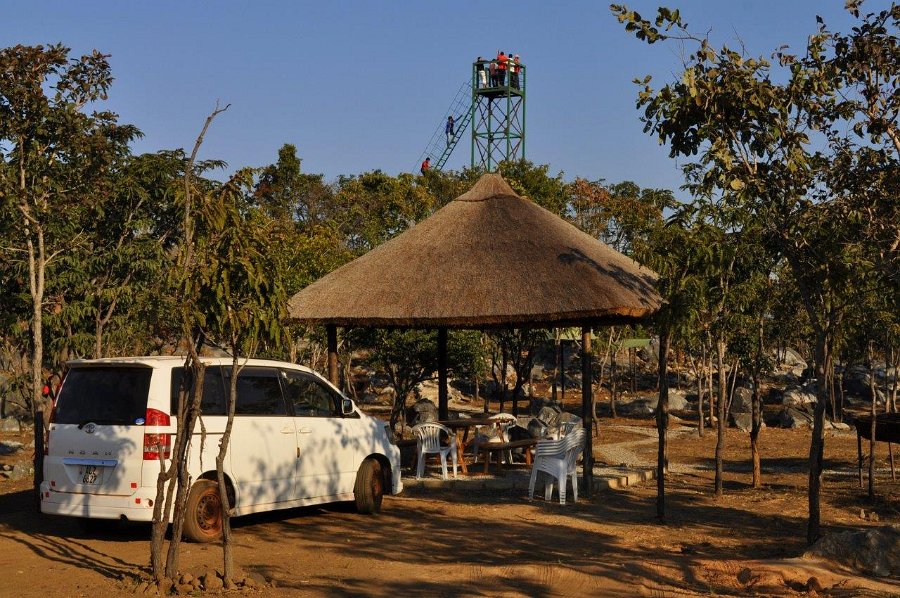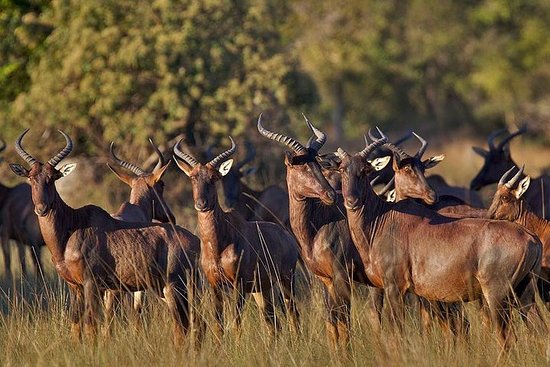
Lusaka National Park is a national park in Lusaka, the capital city of Zambia. It is a small park, covering an area of only 18.2 hectares, but it is home to a variety of wildlife, including zebras, giraffes, antelopes, and several bird species.
The park is a popular destination for visitors to Lusaka, and it offers activities such as game drives, birdwatching, and picnics. It is also a popular venue for events and functions. The park is managed by the Zambia Wildlife Authority, which is responsible for the conservation and management of wildlife in the country.
The Lusaka national park was opened to the public in 2015 making it Zambia’s newest and most accessible park. It is located roughly 30 kilometers from Zambia’s capital city, Lusaka.
There are more than 1,000 animals found in Lusaka National Park including white rhino, giraffe, eland, hartebeest, zebra, sable, kudu, blue wildebeest, waterbuck, black lechwe, impala, puku, bushbuck, reedbuck, warthog, pangolin, and axis deers.
Table of Contents
Map of Lusaka National Park
Follow these Lusaka National Park directions to get there:
- Take the Mosi-au-Tunya road, past the Woodlands stadium, and turn left at the leading traffic lights.
- Continue along this road, which runs alongside power lines until you reach the MFEZ northeast gate.
- Then turn left at the roundabout and take the third turn on the right
- Continue straight for approximately 3km and just before the end of the tarmac road, turn left and follow the road into the car park.
How much does it cost?
The Lusaka National Park price charged for a visit is very minimal. The prices are grouped into two categories, namely:
- Citizens – This refers to Zambians. The price is set at 15 ZMK
- Non-Residents. This refers to people who are not from Zambia(Foreigners). The price for non-residents is $10.
Activities at the park
Lusaka National Park is not considered a top safari destination in Zambia. However, it is the perfect place for locals and tourists to reconnect with nature while staying close to the city.
The safari experiences on offer in the National Park are great for family outings and day trips and include camping. For the intrepid at heart, walking safaris offer valuable insight into the resident wildlife, while cycling safaris are great for those who like to keep fit.
Additionally, bird watchers are encouraged to bring along their binoculars for some incredible sightings high above.
Other activities include boating, picnics, and photographic safaris.
The best time to visit
The best time to visit Lusaka is usually from June to September. The climate is pleasant year-round with warm summers and mild winters, as well as plenty of sun throughout the year. October and November can get very hot in Lusaka.
Wildlife encounters in Lusaka National Park

Lusaka National Park, nestled in the heart of Zambia, is a hidden gem for wildlife enthusiasts seeking an authentic safari experience. As you step foot into this pristine wilderness, you’ll be captivated by the awe-inspiring encounters with the diverse range of wildlife that call this park home.
From the moment you embark on your safari adventure, the park unveils its natural wonders. The vast grasslands stretch out before you, teeming with an abundance of wildlife. Keep your camera ready as you may spot herds of majestic elephants traversing the plains, their graceful presence commanding attention.
Venturing deeper into the park, you’ll witness the incredible diversity of birdlife that fills the air with a symphony of melodic calls. Vibrant-colored lilac-breasted rollers, African fish eagles, and the elusive Pel’s fishing owl may grace your journey, offering a rare opportunity to capture these winged wonders in their natural habitat.
But it’s not just the avian inhabitants that make Lusaka National Park an unforgettable destination. The park is home to a rich variety of mammals, including graceful giraffes gracefully browsing on acacia trees, zebras galloping across the open savannah, and the iconic African lion, regally patrolling its territory.
For those seeking a unique experience, Lusaka National Park offers the chance to encounter some of the more elusive species. The park boasts a thriving population of leopards, known for their stealth and elusive nature. Patiently waiting in the shadows, you may be rewarded with a glimpse of these magnificent predators in their natural habitat.
As the sun begins to set, casting a warm golden glow over the landscape, the nocturnal residents of Lusaka National Park awaken. Keep your eyes peeled for the mesmerizing gaze of a leopard, the playful antics of a spotted hyena, or the elusive serval cat gracefully navigating through the grasslands.
Whether you’re a seasoned wildlife enthusiast or a first-time safari-goer, Lusaka National Park offers an unforgettable experience. Prepare to be immersed in the sights and sounds of the African wilderness, as you embark on an adventure that will leave you with memories to cherish for a lifetime.
